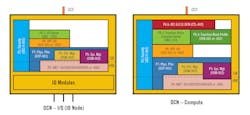Latest OPAF headlines on interoperability projects
Major new and upcoming milestones for Open Process Automation Standard (O-PAS) and Open Process Automation Forum include:
- Publication of O-PAS, Version 2.1 for control functionality, Final edition during the week of Feb. 6, which is the fifth publication of the standard;
- Conformance certification starting in mid-2023 of products that conform to O-PAS requirements;
- Adoption guides for end users and system integrators are now in final review. They’ll de-risk activities for potential users, and help them overcome their fear of trying O-PAS;
- Increasing prototyping projects and field trials worldwide by OPAF members and other end users learning about O-PAS how to implement it. ExxonMobil has a field trial. BASF, Georgia-Pacific, Dow Chemical and Equinor have prototypes. Saudi Aramco, Shell and Petronas have testbeds.
- Joint standards development and demonstration have started, including OPAF and the OPC Foundation’s OPC UA Field Exchange (Fx), and OPAF and NAMUR/ZVEI’s Module Type Package (MTP). Their goal is aligning the standards for controller-to-controller and controller-to-device communications.
Some last-minute tweaks
Shortly before it was finalized based on feedback from suppliers, OPAF’s organizers made several clarifications and adjustments to O-PAS, V2.1, which let enable suppliers, partners, system integrators and users develop and deploy products and systems that comply with it, and deliver the interoperability that everyone is seeking.
“O-PAS, V2.1, defines a lot, and incorporates functions from IT, especially regarding systems management. Several suppliers questioned how to do systems management within the standard, so some compromises and adjustments were made to make it easier for them,” says Don Bartusiak, co-chair of OPAF and president of Collaborative Systems Integration Inc. (CSI-automation.com). Now, V2.1, is clearer and specific enough for suppliers to build O-PAS-compliant products and systems.”
Bartusiak summarized three significant additions that were made in O-PAS, V2.1, Final from the V2.1 Preliminary release. These consisted of:
- Clarifying DCN specifications in V2.1’s Parts 1 and 7;
- Relaxing or significantly clarifying systems management requirements in V2.1’s Part 5, which impacts conformance certification; and
- Adding the IEC 61499 standard that covers event-based function blocks for process measurement and control systems.
Rosetta stone for DCNs
To clarify the standard’s DCN section, OPAF also developed a five-part “Rosetta stone” for its physical platform. It basically defines the locations in the O-PAS reference architecture where DCNs are deployed, functions they perform in each spot, and the conformance requirement profiles they need. These profiles include system management, OPC UA networking, security and others. Compliant products will have to meet one or more of these five profiles:
- DCN—I/O,
- DCN—compute,
- DCN—compute + I/O,
- DCN—gateway, and
- Advanced computing platform.
“We needed to clarify the DCN because there are multiple profiles and instances of it in the O-PAS reference architecture, as well as software and physical manifestations,” explains Bartusiak. “Each of five profiles shows what’s required to make products in that space.
Certification and adoption
Once V2.1’s Part 5 was adjusted to make it practical for suppliers to launch products, they also need a pathway to certification, so users can be assured they’re getting the interoperability that O-PAS promises. So far, verification labs include those accredited by the OPC Foundation (opcfoundation.org) and the ISA Security Compliance Institute, but others are expected to be named shortly. These labs will verify conformance to O-PAS and issue verification reports. Products that pass verification will be certified by The Open Group and will be listed in a publicly available registry of O-PAS conformant products.
Scheduled to start in mid-2023, the first wave will cover several basic performance and networking capabilities, including:
- DCP-001—DCN platform,
- NET-F-001—single Ethernet-to-Ethernet,
- NET-F-002—single Ethernet peer-to-peer,
- OCF-001—OPC UA client/server,
- SEC-F-001—IEC 62443-4-2 for cybersecurity,
- OSM-002—Redfish for system management with Baseboard Management Controller (BMC) chip, and
- OSM-003—Redfish without BMC chip.
To make these assignments easier to approach and handle, OPAF has been drafting and is preparing to launch adoption guides for participants in the O-PAS business ecosystem—end users, suppliers, system integrators, and service providers. Bartusiak reports they’ll likely publish the first version in a couple of months, which is tailored for end users and system integrators (SI). They include information to consider when implementing open-process automation systems, and provide answers to frequently asked questions (FAQ), such as:
- Where can I find out more about O-PAS-certified products and suppliers?
- What’s the SI qualification process?
- How are hardware and software components and selected? Who’s responsible for testing/verification? Is there a testbed by the SI, user or component vendor?
- Who’s responsible for system performance?
- How does O-PAS reduce project engineering and costs?
- How can end users recognize trusted service providers?
- How can end users update or patch software running on O-PAS-certified products?
- How can the end users expand their systems without process interruptions?
“A recurring theme in the adoption guides is that knowledge and experience with O-PAS is the key to success for end user, system integrators, suppliers and service providers,” concluded Bartusiak. “So, our priority for OPAF this year is end user activation with input and prioritization of feature sets for the next O-PAS release, and end user-oriented communications and events.”
About the Author

Leaders relevant to this article:

